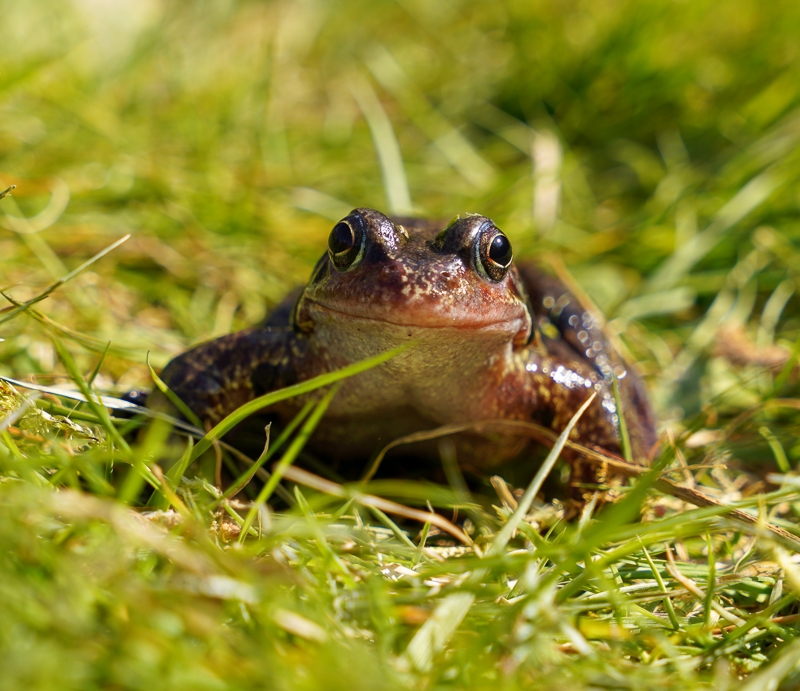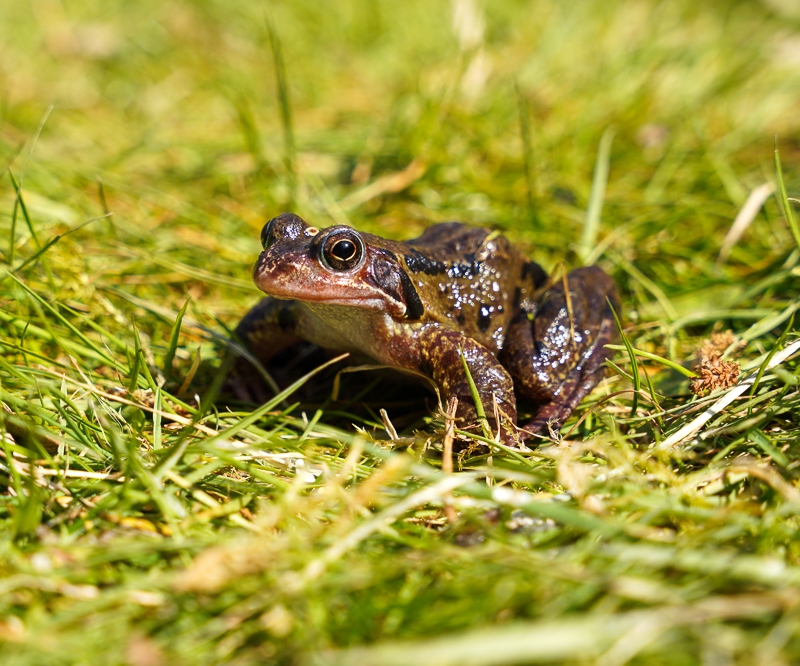WHAT IS RANAVIRUS?

A smiling frog
Ranavirus threatens our common frogs and poses a serious risk to amphibians worldwide.
If you've read Elizabeth Kolbert's The Sixth Extinction you'll know all about the threats that diseases pose to amphibians. Her opening chapter tells the story of the Panamanian golden frog, the amphibian said to offer good luck, which appears on the cover of the book. The Panamanian golden frog is extinct in the wild because of a fungus that interferes with amphibians' ability to absorb electrolytes through their skin, essentially causing them to have a heart attack.
Despite amphibians being some of the greatest survivors in history, populations all over the world are crashing. Disease is a key driver of the decline.
Ranavirus is another threat to amphibians. It has been responsible for die-offs in wild and captive amphibians (as well as reptiles and fish) globally for the past three decades, resulting in population collapse in some areas. The problem was identified in the 1980s, when the disease affected commercially valuable populations.
WHAT IS THE IMPACT OF RANAVIRUS?
Ranavirus causes die-offs and even local extinction in amphibian populations. It's particularly problematic because it has a very broad host range (it can infect lots of different species), which means it can have a dramatic impact on local communities. In the UK, it can kill 80% of a local amphibian population. Declining population numbers have myriad knock-on effects for the ecosystem and biodiversity decline worldwide is an increasingly serious problem.
In the UK, ranavirus mainly affects our common frogs.
HOW DOES RANAVIRUS SPREAD?
Ranavirus spreads through the water, through brief direct contact, and through ingestion.

A common frog
SYMPTOMS OF RANAVIRUS
Ranavirus often produces no visible symptoms, but you could see the following:
emaciation (being very skinny)
red skin
sores and ulcers
bleeding from the mouth or anus
breakdown of limbs
eye problems.
Lots of dead frogs in the same place also suggests ranavirus is about. More information about symptoms can be found here.
WHAT TO DO IF YOU SUSPECT RANAVIRUS
If you see an amphibian that you suspect has or had ranavirus please report it here.
Make sure that dead frogs suspected to have had ranavirus are buried, not left lying around or put in the bin.
HOW TO AVOID SPREADING RANAVIRUS
To avoid spreading ranavirus:
never move amphibians between ponds
don't move spawn
only handle amphibians if necessary (for instance, to move them out of the way of harm or for scientific monitoring)
wash your hands before and after touching amphibians
wash your hands or change gloves in between touching amphibians at different sites, or ideally between individuals
avoid unnecessarily putting lots of amphibians together
practice general biological security for water-based environments (often referred to as check, clean, dry) - clean, disinfect and fully dry containers, clothing and equipment between sites
More detailed guidance can be found here.

Never move frogspawn
HOW CAN I HELP?
You can help declining amphibian populations by building a wildlife pond! Just be sure to follow the guidance on preventing the spread of ranavirus.
For some more optimistic amphibian-related content, you can read about the differences between frogs and toads here and about why toads cross the road here!
Share with your friends
Subscribe to learn more
Join me in exploring our natural world and cultural heritage as we learn how to protect and restore it. Get notified on my latest posts and a monthly newsletter on wider conversation topics for us to chat about.
Recent Posts
If you enjoyed this one, then you might like these too.